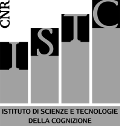Positron emission tomography (PET) with 2-[18F]-fluorodeoxyglucose (FDG) has been widely used for the evaluation of cortical
glucose metabolism in several neurodegenerative disorders while its potential role in the evaluation of cortical and subcortical
activity during a task in the healthy and pathological brain still remains to be a matter of debate. Few studies have been carried out
in order to investigate the potential role of this radiotracer for the evaluation of brain glucose consumption during dynamic brain
activation. The aim of this review is to provide a general overview of the applications of FDG-PET in the evaluation of cortical
activation at rest and during tasks, describing first the physiological basis of FDG distribution in brain and its kinetic in vivo. An
overview of the imaging protocols and image interpretation will be provided as well. As a last aspect, the results of themain studies
in this field will be summarized and the results of PET findings performed in healthy subjects and patients suffering from various
diseases will be reported.
Evaluation of task related brain activity: is there a role for 18F FDG PET imaging?
Publication type:
Articolo
Publisher:
Hindawi Publishing Corporation, Cairo, Egitto
Source:
BioMed Research International (Online) (2019). doi:10.1155/2019/4762404
info:cnr-pdr/source/autori:Chiaravalloti A, Micarelli A, Ricci M, Pagani M, Ciccariello G, Bruno E, Alessandrini M, Schillaci O/titolo:Evaluation of task related brain activity: is there a role for 18F FDG PET imaging?/doi:10.1155/2019/4762404/rivista:Bio
Date:
2019
Resource Identifier:
http://www.cnr.it/prodotto/i/404394
https://dx.doi.org/10.1155/2019/4762404
info:doi:10.1155/2019/4762404
Language:
Eng


